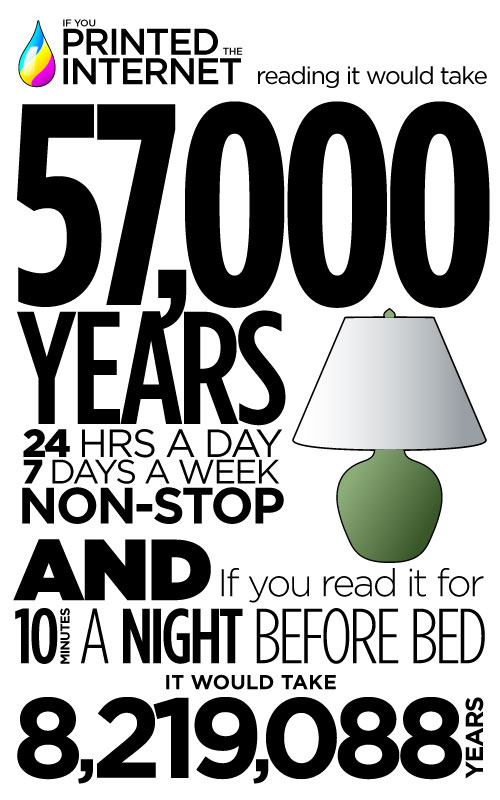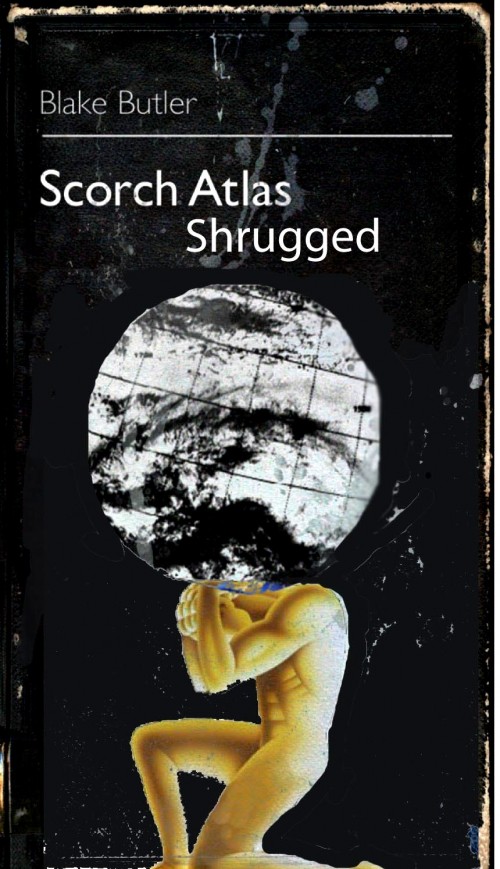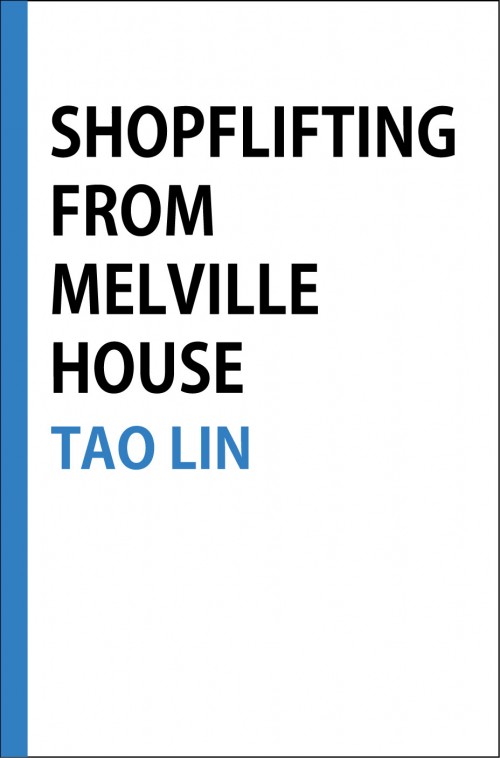National Book Award’s book-a-day
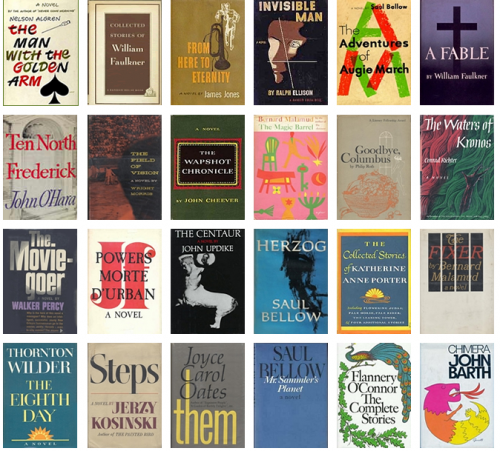
National Book Award’s daily blog on fiction winners has been going on a while, so sorry I’m a little late — but it’s kinda good in a way, since now the majority of the content is already there. It’s a great in depth resource for those who like to tap now and then the esteemed list of winners. If you’ll grant me a commentary (as I always seem to have one), it’s funny how some of the titles shine throughout history, while others become completely obscured over time. One wonders if the former ones are simply written by authors with greater career trajectories, or if the “inherent quality” of the works is at matter. There’s this idea we have that capital T truth takes time to show us who was right all along, never mind that political despots and religious fanatics subscribe to this same idea of “in the end I am right.” Just pointing this out because I see a lot of “aesthetic/artistic fundamentalism” in creative circles. Pretty scary way to think, I think.
And for every winner there are the oh-so-close runner ups and the oh-kinda-close shortlist. In this numbers game of cultural eternity, disappointment is on one’s side; and even when one wins, one may not even be remembered — and that’s all one wants right? to be remembered? The ego is like a first relationship: we want to be remembered forever for just okay sex.
September 16th, 2009 / 2:08 am
New issue of The Collagist | Kim Chinquee judges Collagist flash fiction contest | HTMLGIANT designer Gene Morgan redesigns Pank Magazine | Excerpt from Shoplifting from American Apparel at Hipster Runoff | Leo Tolstoy that guy on Led Zeppelin IV album cover
Every September 11 McSweeney’s runs a transcript of remarks John Hodgman gave at a literary event shortly after September 11. His sentiments towards this difficult matter is very well handled, even inspiring. I enjoy reading it every year.
Alternate titles for this season’s two most anticipated releases
*click on covers to purchase original, and much better versions
Blake and Tao are two very talented writers, both in their own right spearheading the world of indie publishing in two very different ways. Just poking a little fun guys, good job both of you. I’m excited to read your books.
Jonathan Lethem brings us issue 7 of THE THING, a quarterly in object form in which invited artists, writers, etc. create/curate an issue.
Ani Smith interviews HTMLGIANT contributor Mike Young for Writers’ Bloc. Contains awesome original song.
The subconscious syntax of Michæl Chabon’s hair
Michæl Chabon can’t keep it up — that wisp of hair that seems to always hang on his forehead all the time. At first glance, one sees a random tuft from a man perhaps too deep in thought to use a comb more than once a day; but I started noticing that these locks made grammatical marks, as if to suggest “don’t just read my book, read my face.” I once went to a Chabon reading at the public library. He called the organizers from his cell phone minutes before the event claiming public transit was crazy. “More fountain water for me,” I thought.
The following is a list of the subconscious syntax of Michæl Chabon’s hair, including excerpts which illustrate said grammatical functions.
1. The Apostrophe

Chabon is not in the business of the avante garde, so there will be no mind blowing today, just a pretty legit use of apostrophes. From The Amazing Adventures of Kavelier & Clay, which won the Pulitzer in 2001:
As soon as the German army occupied Prague, talk began, in certain quarters, of sending the city’s famous Golem, Rabbi Loew’s miraculous automaton, into the safety of exile.
That was a pretty nice use of two apostrophes, both as possessive ones. I tried to find apostrophes used as contractions, but couldn’t, so I’ll put some of my own. I have a feeling maybe good writers aren’t supposed to use contractions. Ain’t that shit.
New York City subway top 10 books
The New York Times surveys what people are reading on New York subways, here are the top 10 books. (Click on the link for Newspapers and Magazines too.)

The first is about a girl with a dragon tattoo, the last is about a girl who played with fire. The second is from the guy who wrote about a girl with curious hair. The third is written by a guy with curiously no hair. The fourth was released by a publisher who was maybe thinking of the cover of the second book. The title of the fifth book is mysteriously not a year, and a handful of years pass in the sixth. The seventh was written by a woman who liked to cook food, and the second to last by a man who likes to think about food. In the eight book, the eponymous heroine’s suicide [is this where I say “spoil alert”?] involves public transportation, but don’t worry, by a train not a subway. The last time I visited New York, I pensively read the map and people’s faces. Good Job New York City, and onwards literature!
Standing books
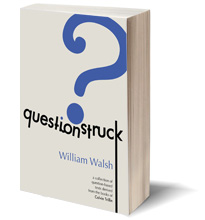
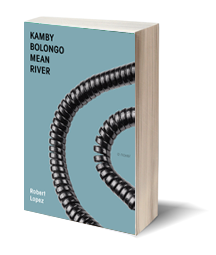 Books have been virtually standing up lately, endowed with a visual girth which reflects the meatiness inside. I like this idea, but it does make me wonder: why does a medium inextricable with 2D wanna play 3D? Is it a marketing thing? Like a representation of the actualization of having the physical book in one’s hands? Or is it simply the flourishes of photoshop’s capacities? Here are two books from Keyhole and Dzanc. One notices they are rendered with the same template. (I actually first thought they took a picture of the book.) I often wonder, “is the actual book that thick?” That’s a meaty 600 page-ish thickness.
Books have been virtually standing up lately, endowed with a visual girth which reflects the meatiness inside. I like this idea, but it does make me wonder: why does a medium inextricable with 2D wanna play 3D? Is it a marketing thing? Like a representation of the actualization of having the physical book in one’s hands? Or is it simply the flourishes of photoshop’s capacities? Here are two books from Keyhole and Dzanc. One notices they are rendered with the same template. (I actually first thought they took a picture of the book.) I often wonder, “is the actual book that thick?” That’s a meaty 600 page-ish thickness.

